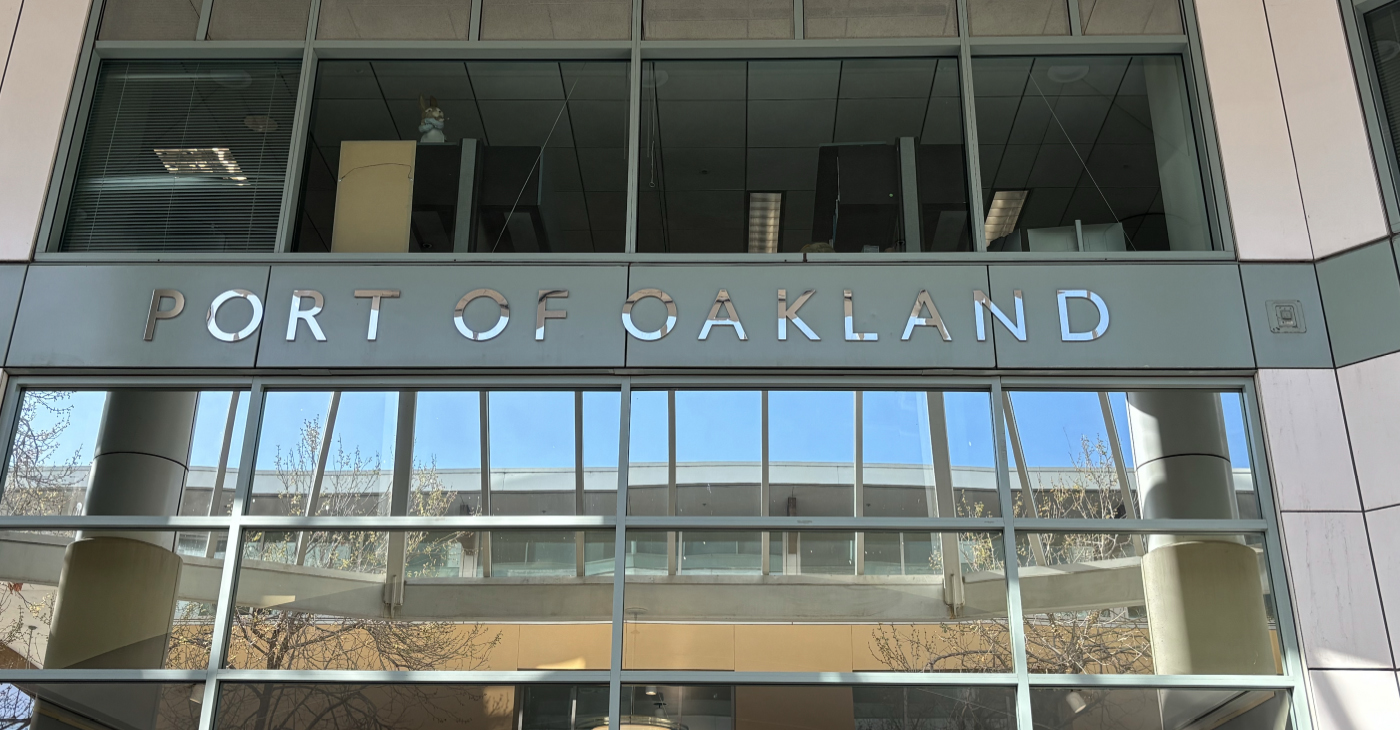Transportation
Car Review: 2016 Volvo XC90
By Frank S. Washington
NNPA Columnist
SANTA MONICA, CALIF. (NNPA) – Now that Volvo has been left alone by its new Chinese owners, an opposite tack from its former corporate parent, the Swedish automaker can get back to being itself. That was evident here as Volvo unveiled its XC90 three row sport utility.
The 2016 Volvo XC90 is a significant new vehicle on several levels. It signals Volvo’s climb into the ranks of luxury automakers. It also signals technological advancements. And it is the beginning of a product onslaught that will make the 2016 XC90 the oldest vehicle in Volvo’s lineup by 2018.
First up is power. For the U.S. market, the XC will be propelled by 2.0-liter, four cylinder Drive E engines. There will be two versions: one for the 2016 Volvo XC90 T6, the second for the T8. But it is not what you think; both engines are identical technologically advanced 2.0-liter four cylinders.
The T6 engine had a supercharger and turbocharger working together on the 2.0-liter, four cylinder that made 316 horsepower and 295 pound-feet of torque. The T8 XC90 had what Volvo is branding a twin engine. The same four-cylinder power plant, this time rated at 313 horsepower, is combined with an electric motor. Together they make 400 horsepower and 472 pound-feet of torque. The T8 is a plug-in hybrid; both engines were mated to eight-speed automatic transmissions.
All 2016 XC90s sold here will be all-wheel-drive models. But for fuel economy their AWD system will be front-wheel-drive based capable of sending half of the vehicle’s torque to the rear wheels when needed.
We test drove the T6 and the T8 and found neither lacking in power or agility. Handling was good, especially for a sizable sport utility with three rows of seats. And both of our testers had the top of the line air suspension.
The T6 got 20 mpg in the city, 25 mpg on the highway and 22 mpg combined. The T8 got 59 MPG in the city. Highway numbers were not available at the time of the test drive. The T6 could get from, zero to 60 mph in 6.1 seconds while the T8 could do it in 5.3 seconds and the pair have a top speed of 130 mph. Remember, both were hefty sporty utilities with curb weights of 4,627 pounds for the T6 and 5,059 for the T8. It was the low-end torque that moved them quickly from a standing start.
Still, neither felt overweight and both were fairly agile and they were well balanced as we drove through the mountains and canyons here with their twisting, tightly curved two lane roads. What’s more, the blowers enabled the T6 and the T8 to get up and over and through the mountain roads without the straining that normally comes with four cylinder engines at altitude. In addition, both the T6 and the T8 can tow up to 5,000 pounds.
Although an official said Sweden was not considered in the development of the new XC90, we don’t think so. Gasoline costs somewhere in the neighborhood of $8 per gallon in the Scandinavian country as well as the rest of Europe. That had to play a role in the company’s development of high-powered, small displacement fuel efficient Drive E engines.
Blown power for the long hauls that come in the expansive United States combined with the fuel efficiency of small four cylinder engines, makes for a globe-gripping vehicle. The Drive E engine family includes diesels but the oil burners will not be sold in this market; at least, not yet.
However, no doubt Volvo used its American design studio in Camarillo, Calif., to imbue the 2016 XC90 with the sense of American luxury needed for it to take on the German and Japanese luxury competitors in this market.
The interior of the XC was concept car quality. It was airy and loaded with matted walnut wood trim that looked almost natural. There was also a trim level that featured aluminum and chrome appointments. The T8 even featured a handmade crystal shift knob. Plus, the XC90 has a top of the line audio system that features 19 speakers and 1,400 watts of power. It includes an air-ventilated system in the wheel well that turns the entire interior into a giant subwoofer.
The seats were exemplary. They had what Volvo called an ergonomic shape that resembled the human spine. The XC90 took four years to develop; the seats took seven. Not only did they look good, like a pillowed new age office chair, they took up less space because they were thinner. Thus, they created more legroom for second and third row passengers.
We didn’t try them, but Volvo said the last row of seats, which folded creating a flat cargo floor, could accommodate someone 5’6” tall. The second row featured three individual seats with an optional child booster seat in the middle. All three could recline as well as slide forward, creating more space for third row passengers. The seats could be outfitted with adjustable side bolsters, seat cushion extensions and they had massage capability.
It was a digital interior. The 2016 XC90 had no knobs, save one, or buttons anywhere. There were steering wheel controls and what Volvo called the portrait screen. That screen controlled everything: climate, seats, media, navigation, phone – everything. Even the rear seat climate controls were digital. And the screen was based on infrared, thus, it detected what icon we were going to push when our finger got one milometer away. That means, Volvo said, that it could be operated while wearing gloves. To say that the premium audio system really thumped out sound is an understatement. It was something special.
Safety has long been Volvo’s hallmark. Those same spine-hugging seats had energy absorbing features to help prevent spine injuries if the XC90 runs off the road during an accident and experiences a hard landing. The sport utility will automatically brake at intersections when it detects an oncoming vehicle while making a left turn. And the XC90 will automatically brake when it encounters cyclists or pedestrians in front it.
Its adaptive cruise control will automatically follow the vehicle ahead in stop and go traffic. Acceleration, braking and steering are controlled automatically. The XC90 can park itself vertically or perpendicularly and four cameras will project a 360-degree view of the vehicle that includes elevation (you have to see it). The XC90 even has a rear collision warning system, in case somebody is going to hit you.
About the only quibble we’ve got is that Volvo says the control system is intuitive. We don’t know, there’s an awful lot to learn. Some sort of instructive software might not be a bad idea. All that new technology is wrapped in appealing sheet metal. Volvo’s grille has been returned to align the iconic arrow with the diagonal slash across the taller grille.
The DRLs form a “T” shape dubbed ‘Thor’s Hammer” that split the headlights. The XC90 has a clam shaped high hood. The beltline and shoulders were sharper and ran down the side connecting to more distinctive taillights. It was an understated elegance.
The XC90 signals that Volvo is back with a vision and the product to match it. What’s more, or worse for competitors, is that the Swedish automaker says it has more of the same type ground breaking products in the pipeline.
A special edition, 1,927 copies, signifying the year the company was founded is being delivered in June. The T6 goes on sale in July; the T8 follows in October. There are three trim lines for each model: Momentum, Inscription and R-Design. Base prices range from $48,900 to $71,600; neither includes a $995 freight charge.
Quality, safety and technology is what you expect from Volvo. It has been a long wait for the automaker to start funneling new products to market but we don’t think anyone is going to be disappointed. The challenge now is will Volvo put forth the marketing muscle, meaning money, to reclaim its niche in American car the market.
Frank S. Washington is editor of AboutThatCar.com.
###
Bay Area
Port of Oakland Commission Votes to Change Oakland Airport to ‘San Francisco Bay Oakland International Airport’
The Port of Oakland Commission voted unanimously to change the name of Metropolitan Oakland International Airport to San Francisco Bay Oakland International Airport at a commission meeting Thursday afternoon. The Port initially announced the name change on March 29, claiming that the change will attract more passengers and enhance the airport’s visibility. They contend that the airport often gets neglected by the public’s lack of knowledge of Oakland’s proximity to San Francisco.

By Magaly Muñoz
The Port of Oakland Commission voted unanimously to change the name of Metropolitan Oakland International Airport to San Francisco Bay Oakland International Airport at a commission meeting Thursday afternoon.
The Port initially announced the name change on March 29, claiming that the change will attract more passengers and enhance the airport’s visibility. They contend that the airport often gets neglected by the public’s lack of knowledge of Oakland’s proximity to San Francisco.
“We want people to know where Oakland is and how beautiful our city is. We want them to visit, we want them to spend their money, and we want to keep our money into our local economy,” Port Commission President Barbara Leslie said at the meeting.
The commissioners shared anecdotal experiences and research to explain how this new name change will elevate and add to the growth of Oakland, not take away from their Bay Area neighbors.
The Port claimed that local residents had been asking for more options in domestic and international flights, but in order to do that, outside travelers need to be aware of Oakland’s presence first.
Since the announcement of the new name, San Francisco leaders strongly opposed the suggestion for a change, the City Attorney going as far as threatening legal action.
SF City Attorney David Chiu announced Monday that his team sent a letter to the Port of Oakland, writing that if Oakland goes forward with the name change, the city will go forward with a lawsuit to prevent the use of their trademarked name.
San Francisco owns U.S. federal trademark registrations for the marks “San Francisco International Airport”, the letter says.
Chiu further claimed that the name change will only cause confusion and chaos for travelers who are used to seeing the San Francisco name in the SFO trademark.
“We want to see the entire Bay Area thrive as a tourist destination and expand our offerings to visitors, but this proposal is not a legal or practical way to go about it. If Oakland moves forward with this proposal, San Francisco will pursue legal action to prevent misuse of our trademark,” Chiu said.
SF Mayor London Breed joined Chiu’s letter, stating that Oakland does not need to add the internationally popular city to its brand in order to grow its services.
“[Oakland] is rich in culture and wonderful people and has its own unique identity. It does not need the name San Francisco as part of its airport to stand out,” Breed wrote.
The Port defended its proposed actions, saying that if the vote did go forward, they would “take all appropriate measures to defend its right to use this accurate geographic identifier.”
“The proposed name modification will clarify, not confuse. The new name identifies where OAK is actually located, which is on the San Francisco Bay,” a spokesperson said on behalf of the Port.
Support for the name change extends beyond the Port. Several regional leaders, airlines and community members have come out in support of the name change, including Oakland Mayor Sheng Thao.
“This adjustment isn’t just about signage—it’s about inviting travelers to discover all that Oakland and the region have to offer. From our local dining scene to unique shopping spots and cozy hotels, there’s something here for everyone. Let’s work together to ensure that Oakland Airport continues to serve as a welcoming gateway for visitors and a source of pride for our community,” Thao said.
Because of public outcry amongst residents and leaders in Oakland and San Francisco before and during the Commission meeting, the Board decided to extend the second reading for the proposed name change from the end of April to the first meeting in May. This decision will allow commissioners to connect with community groups and leaders over their concerns for the change.
The Port Commission is scheduled to hold a second reading of the proposed name change on May 9.
Bay Area
Oakland Finishes Final Draft of Downtown Specific Plan for Potential City Improvements
In late March, Oakland’s city administration announced the final draft of their Downtown Specific Plan, a blueprint for city improvements and developments over the next 20 years. The comprehensive 474-page plan lays out policies for downtown developments that will increase economic, social and cultural, and communal opportunities for residents and workers who frequent this essential hub in Oakland.

By Magaly Muñoz
In late March, Oakland’s city administration announced the final draft of their Downtown Specific Plan, a blueprint for city improvements and developments over the next 20 years.
The comprehensive 474-page plan lays out policies for downtown developments that will increase economic, social and cultural, and communal opportunities for residents and workers who frequent this essential hub in Oakland.
Several departments over the course of eight years developed the plan, with two phases that emphasized a need for community input from local stakeholders, such as leaders and residents, and a focus on the role of social and racial equity in past and future developments.
Throughout the extensive plan, the concept of equity for marginalized communities is embedded with each goal and priority for the improvements to downtown. It acknowledges that social and racial barriers are preventing these communities from thriving on an equal playing field.
The authors identified six key disparities, or ‘equity indicators’, that set the baseline for how success will be measured for the improvements. These indicators include the burden of housing costs, homelessness, displacement, disconnected youth, unemployment rate and median income.
The plan is also broken up into chapters, each describing a major issue or topic that is plaguing downtown residents and workers, such as mobility, culture preservation, community health and sustainability, and land use and urban design.
Within each chapter, the authors dedicate a section to the impacts of the COVID-19 pandemic for the various areas of interest, illustrating how disparities and inequities increased before and after the disease’s peak.
Two major issues highlighted in the plan are economic opportunity and housing and homelessness. Both of these issues have been aggravated by the pandemic and require substantial support and resources to move forward.
Many reports coming out of the commercial and residential districts downtown have blamed the rise in crime and cost of living as reasons for leaving Oakland for other cities or closing down indefinitely.
The plan attributes rising rents of both residential and commercial properties to the displacement of local businesses and entrepreneurs. Downtown also has an imbalance in the jobs to housing ratio, which limits access to jobs as commuting distances increase.
Other concerns for the local economy are barriers to employment opportunities for workers of color, non-English speakers, and those with limited access to transportation. As stated in the plan, downtown also has a lack of vacancies near public transit hubs, such as BART, bus stops or ferry terminals, which could save workers money and time for their commutes into the city.
According to the downtown plan, the average unemployment rate for the white population was 5.9%, but the Asian population was at 6.7%, and for the Black population it was even higher at 10.4%.
The proposed solutions for the lack of economic prosperity include providing assistance to local businesses owned by people of color, reinforcing downtown as the ‘place to be’ for nightlife entertainment, and building businesses closer to public transit.
The addition of over 18.3 million (m) sq. ft. of new commercial space, 1.3m sq. ft. of new institutional space, and 500,000 sq. ft. of new industrial space, could potentially create almost 57,000 jobs downtown.
Housing and homelessness, issues closely tied to economic prosperity, are top concerns for Oakland residents. High rents have led to displacement and homelessness for those unable to keep up with the rising costs of the Bay Area.
Over 5,000 people are currently experiencing homelessness in Oakland, according to 2022 Point In Time data. 60% of this population is Black despite only making up nearly 20% of the total city population.
The plan explains that by adding nearly 29,000 new homes and expanding affordable housing units across the city by 2040, this would help alleviate the stress of obtaining and affording a home.
Strategies proposed to tackle the housing and homelessness crisis include increasing renter protections, providing additional shelters and services for homeless residents, and promoting homeownership in downtown with first-time buyer assistance and proactive assistance to vulnerable homeowners.
The plan acknowledges that the implementation of changes and developments amongst the several concerns outlined in the document will take time, both in short and long term periods.
To better explain how and when each project will be addressed over the course of the next two decades, a detailed 123-page graph shows which agencies, potential funding sources, and costs come with the goals.
The Oakland Planning Commission and Landmarks Preservation Advisory Board will each hold public hearings regarding the final draft of the Downtown Plan in May and June.
Bay Area
Bikes Now Allowed on BART Escalators
As of Jan. 1, bikes are allowed on most of the escalators throughout BART, a new rule change that aims to make it easier for cyclists to board trains. Bikes will only remain banned from BART’s 10 narrow escalators located at the 19th Street Oakland, Antioch and Oakland Airport Connector stations, according to the transit agency.

The Richmond Standard
As of Jan. 1, bikes are allowed on most of the escalators throughout BART, a new rule change that aims to make it easier for cyclists to board trains.
Bikes will only remain banned from BART’s 10 narrow escalators located at the 19th Street Oakland, Antioch and Oakland Airport Connector stations, according to the transit agency.
BART is also now allowing bikes on all train cars except for the first car. Bikes were previously banned from the first three cars during commute times.
Ten years ago, BART ended a ban on bikes on the transit system during the commute hours. Over the last decade, the transit agency noted the growing popularity of larger, heavier bicycles.
“Carrying bikes up and down stairwells can be difficult and not all bikes fit in our elevators,” said BART Director Rebecca Saltzman. “Updating our rules will make BART easier to use for cyclists and families bringing bikes on the train. Bikes play an important role in getting people out of their cars and on public transit and these updated rules encourage environmentally friendly multimodal travel options.”
BART encouraged riders to use their best judgment when using escalators. The transit agency released a new video detailing safety tips for bringing bikes on escalators in the system.
BART offers this Elevator Dimension Guide to provide cyclists with dimensions of each elevator in the system, including measurements of the door, width, length, and diagonal space across the floor.
-

 Community2 weeks ago
Community2 weeks agoFinancial Assistance Bill for Descendants of Enslaved Persons to Help Them Purchase, Own, or Maintain a Home
-

 Activism3 weeks ago
Activism3 weeks agoOakland Post: Week of April 3 – 6, 2024
-

 Business2 weeks ago
Business2 weeks agoV.P. Kamala Harris: Americans With Criminal Records Will Soon Be Eligible for SBA Loans
-

 Activism2 weeks ago
Activism2 weeks agoOakland Post: Week of April 10 – 16, 2024
-

 Community2 weeks ago
Community2 weeks agoAG Bonta Says Oakland School Leaders Should Comply with State Laws to Avoid ‘Disparate Harm’ When Closing or Merging Schools
-

 Community1 week ago
Community1 week agoOakland WNBA Player to be Inducted Into Hall of Fame
-

 Community2 weeks ago
Community2 weeks agoThe Year Ahead: Assembly Speaker Rivas Discusses Priorities, Problems
-

 Community1 week ago
Community1 week agoRichmond Nonprofit Helps Ex-Felons Get Back on Their Feet















































